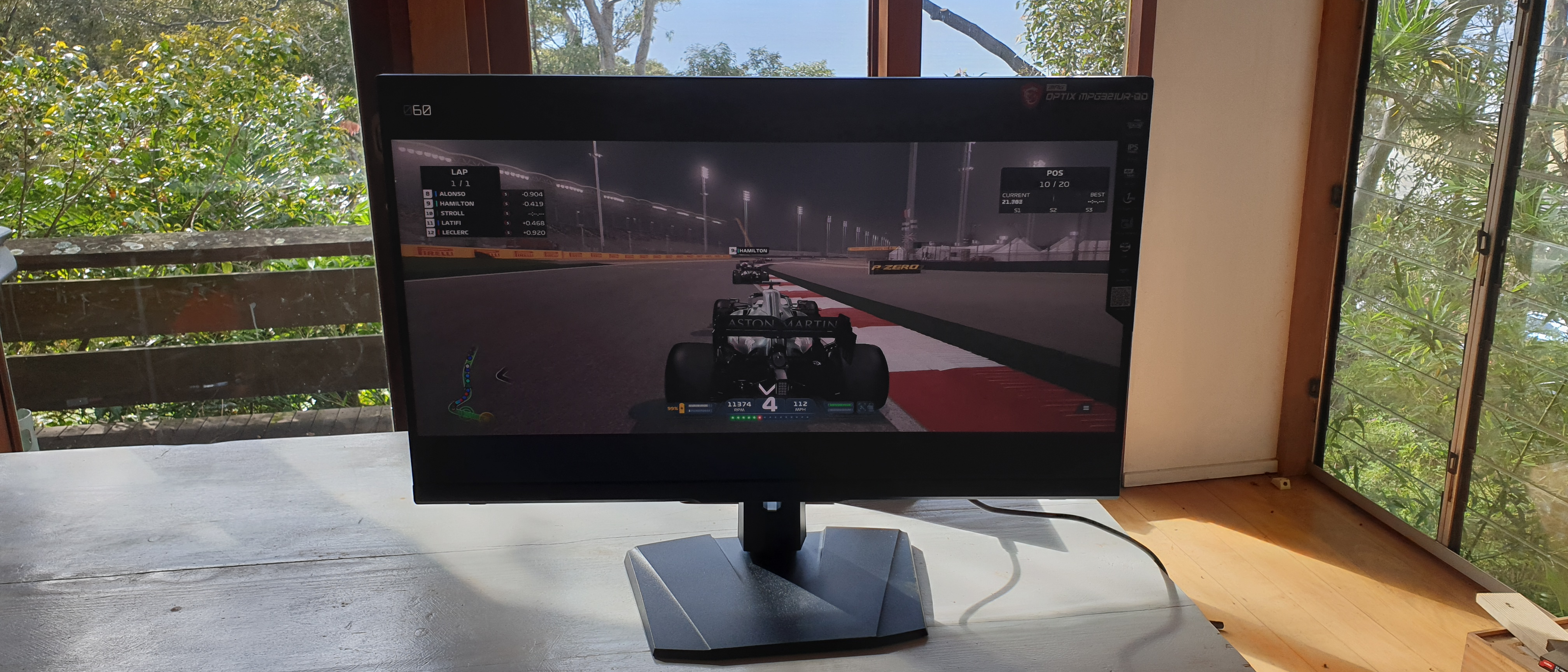Our Verdict
MSI's Optix MPG321UR is one of the first displays to support 4K / 144Hz, and it offers this alongside an impressive HDR color gamut. Sadly, it lacks full Nvidia G-Sync and any overdrive functionality, but it does offer AMD FreeSync Premium Pro HDR gaming.
For
- 4K IPS at 144Hz
- 1ms GTG response rate
- 97% DCI-P3 color
- Built-in KVM
Against
- Expensive in some regions
- Saturated gaming presets
PC Gamer's got your back
Correction October 4. 2021: A previous version of this article incorrectly stated that this monitor did not have FreeSync certification or DCI-P3 and sRGB display modes. The monitor has AMD FreeSync Premium Pro certification and both DCI-P3 and sRGB viewing profiles and the score has been adjusted because of this.
High resolution, high refresh gaming has been a bit of a pipe dream until now, but thanks to a handful of 4K 144Hz monitors arriving at the end of 2021 it seems this dream gaming monitor featureset is finally here to stay.
The Optix MPG321UR is one of MSI's new flagship monitors and based on the long list of top end specs it looks like a pretty impressive offering. It’s a little more expensive than Asus' TUF Gaming Monitor VG28UQL1A or the Eve Spectrum, but it's also bigger, brighter and has a more impressive colour gamut, which goes a long way to justifying the price jump.
Panel size: 32-inch
Panel technology: IPS
Native resolution: 3,840 x 2,160
Aspect Ratio: 16:9
Refresh rate: 144 Hz
Response time: 1 ms GtG
HDR: Vesa HDR 600
Contrast: 1000:1
Color: 97 percent DCI-P3
Brightness: 600 cd/m2
Video Inputs: DisplayPort 1.4 x1, HDMI 2.1 x2, USB-C 2.0 x1
Other: Nvidia G-Sync compatible
MSRP: $999 | AU$1,599
At 32-inches, the Optix MPG321UR is huge, so it won't have any issues displaying two, or even three, windows side-by-side. The 3,840 by 2,160 pixel resolution is enough to prevent any pixelation across this generous screen, making it easy to work on and delivering great clarity when gaming.
This is about the biggest 16:9 monitor that you’d really consider having on your desk, but the surplus size means it's a viable device for living room use if you'd prefer to do some armchair gaming. Also, if you own a next-gen console the HDMI 2.1 inputs will let you run current console games at their peak 4K 120Hz output settings without needing to nab a new TV.
In addition to being able to run this monitor at its full 144Hz refresh rate over a DisplayPort 1.4 or HDMI 2.1 inputs, PC gamers will also get the benefit of G-Sync compatibility to eliminate screen tearing and other unwanted artifacts for anyone with a Nvidia GPU.
Despite the price point this monitor doesn’t have a physical G-Sync chip, instead deferring to adaptive sync for G-Sync compatibility. This means it'll miss out on variable overdrive technology designed to prevent ghosting and trailing on fast moving objects. There's also been no effort to build in any custom variable overdrive features either, so you’ll have to expect you'll get these artifacts on fast moving objects.
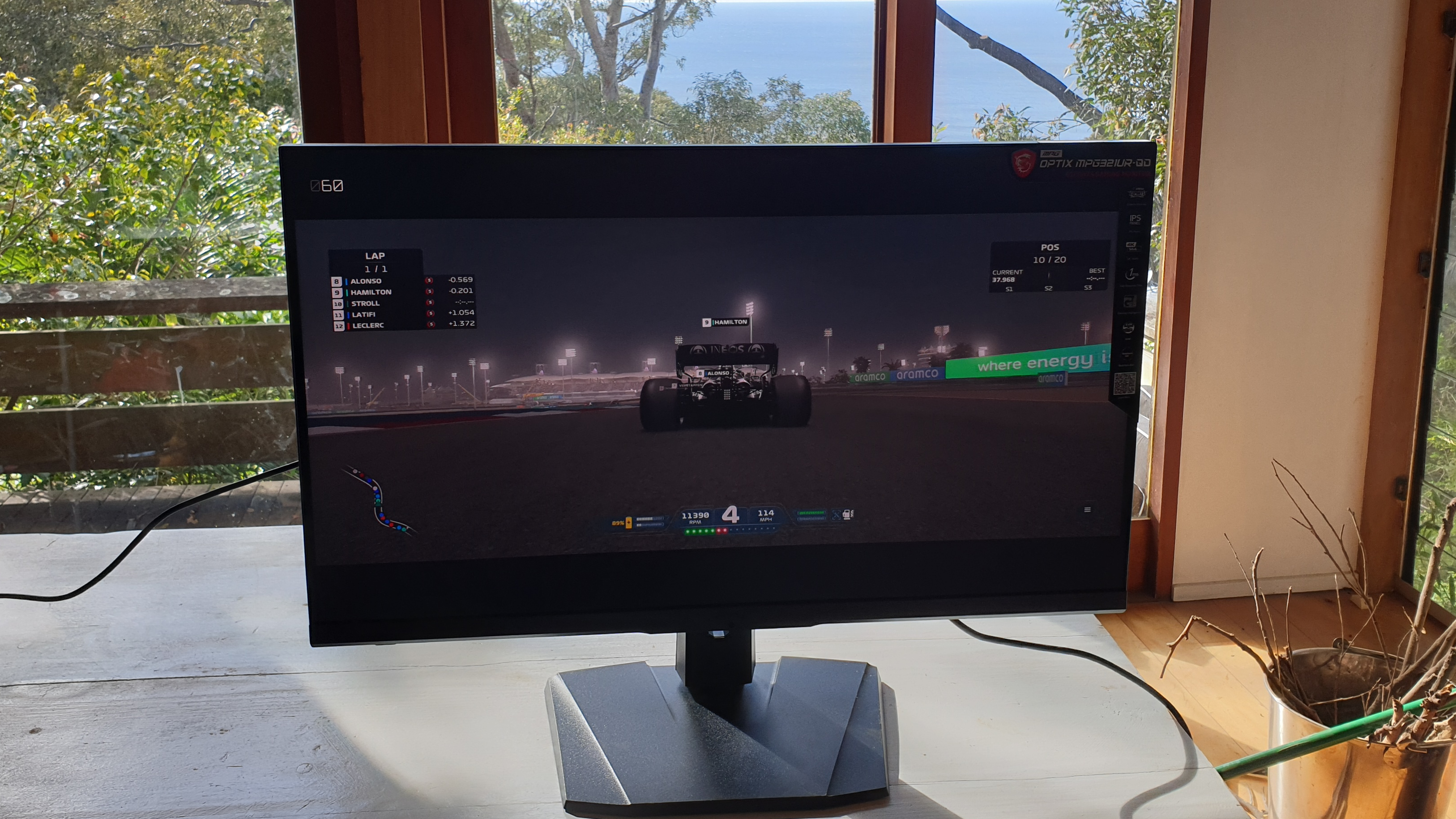
While MSI doesn't advertise it publicly, the Optix MPG321UR also features support for AMD’s highest tier of variable refresh rate compatibility: FreeSync Premium Pro. This certification means you can guarantee games like Assassin's Creed Odyssey and Borderlands 3 will be able to run in 4K HDR at whatever refresh rate your GPU is capable of. AMD’s current best GPU still doesn’t quite have the grunt to push these titles much over 60fps, so there’s plenty of overhead to get additional performance benefits if you upgrade to more powerful GPUs in the future.
The display does offer a professional-level, sub 1ms grey-to-grey (GTG) response rate, which combines with the high resolution screen to make gaming feel snappy and responsive, without losing a super high resolution image. GTG might be an easier benchmark to achieve than some tests, but this level is still up there with the fastest response rates possible for gaming displays, so this screen is more than adequate for the most elite rigs.
The Optics MPG321UR takes the screen brightness to the next level by offering a screen with a 600nit peak brightness allowing it to achieve Vesa HDR 600 certification. While this isn't quite the 1000nit minimum needed on a TV to achieve HDR certification, it does go a long way towards making it a great looking option when you’re on the couch, and it's way brighter than most monitors. Combine this with the 97% DCI-P3 colour reproduction capabilities and you have an amazingly vibrant screen that's almost accurate enough to be used for professional colour grading purposes.
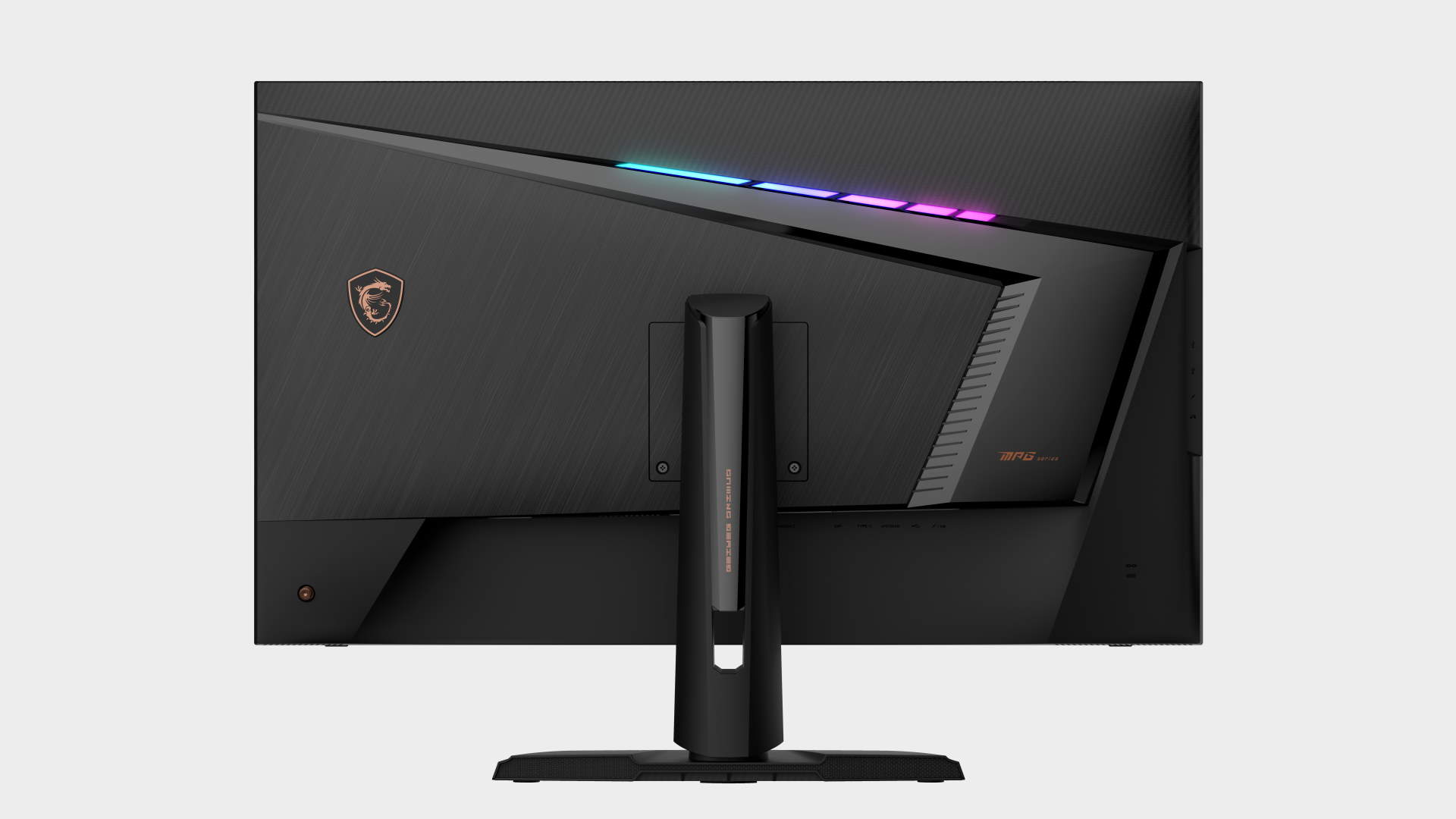
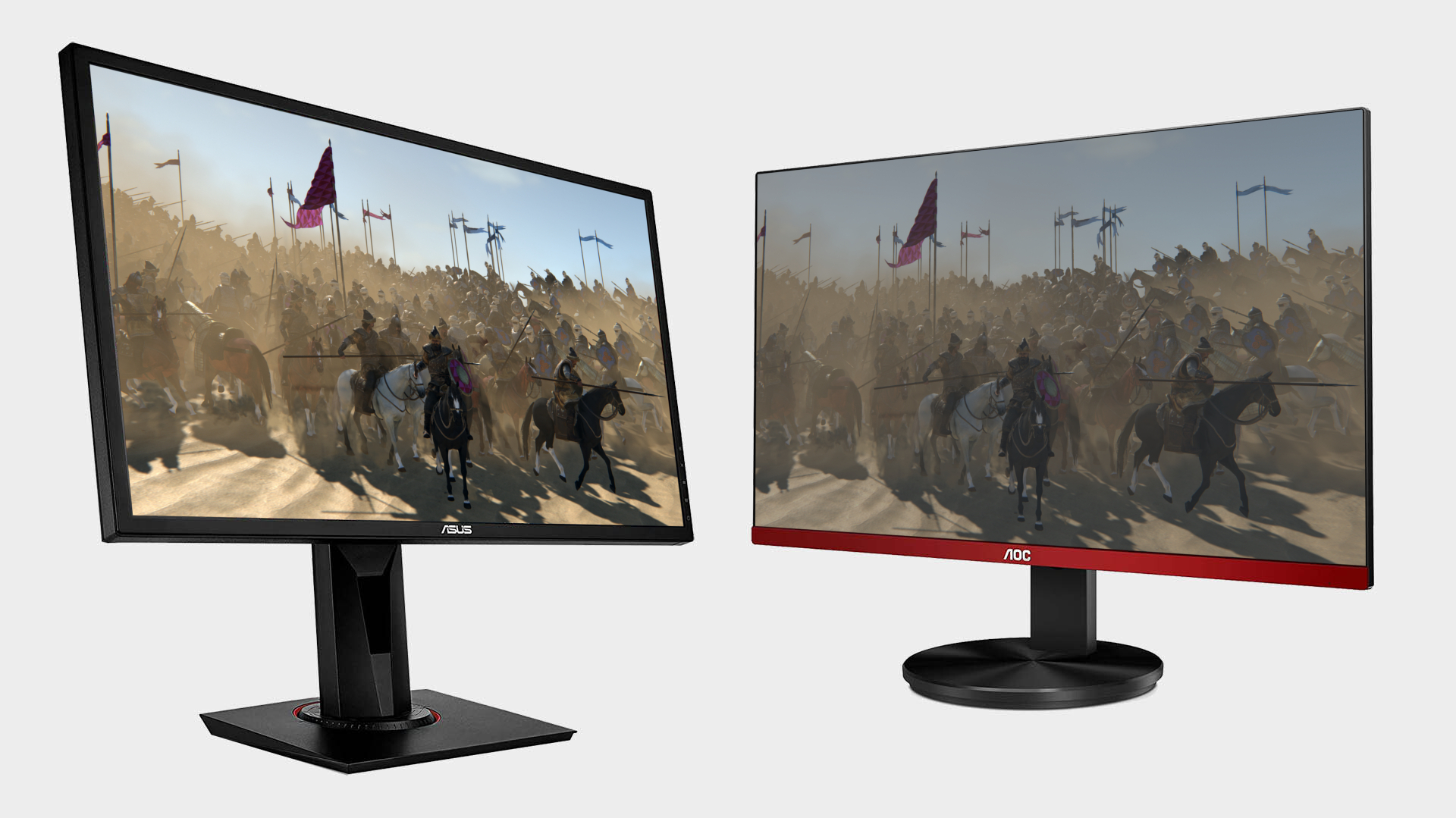
Best gaming monitor: pixel-perfect panels for your PC
Best high refresh rate monitor: screaming quick screens
Best 4K monitor for gaming: when only high-res will do
Best 4K TV for gaming: big-screen 4K PC gaming
Some of the gaming viewing presets (particularly the racing mode) were not well calibrated out of the box, and made the colors look way more cartoonish than they needed to be. But there are at least color accurate DCI-P3 and sRGB viewing modes that you can swap to for a more realistic viewing experience. I actually couldn’t find these presets in the menu system initially, but they are there, and MSI has said it’ll make them more prominent in future software updates.
While it's got a few on screen gaming enhancements, including crosshairs and scope filters, it's a little lighter than some competitors monitors in this department. As noted earlier it doesn’t have genuinely useful gaming technologies like variable overdrive or motion blur syncing, instead the Optix MPG321UR has opted for technologies like 'Smart Brightness' which is just adaptive brightness by another name, but required the inclusion of a dedicated webcam-looking light sensor at the bottom of the screen.
MSI suggests this feature will prevent you from blinding yourself when you turn on the monitor in a dark room, and sure some people might find this useful, but it's the kind of thing that could also backfire massively by making unwanted changes to your screen brightness mid-game.
I'll take dumb brightness, thanks.
The one 'Gaming Intelligence' feature that does seem like a worthy bonus is Sound Tune, which supposedly uses AI trained software to remove unwanted background noise from incoming and outgoing comms. This feature is potentially massively helpful if you can't avoid background noise or you want to dull someone else's obnoxiously loud Blue switches.
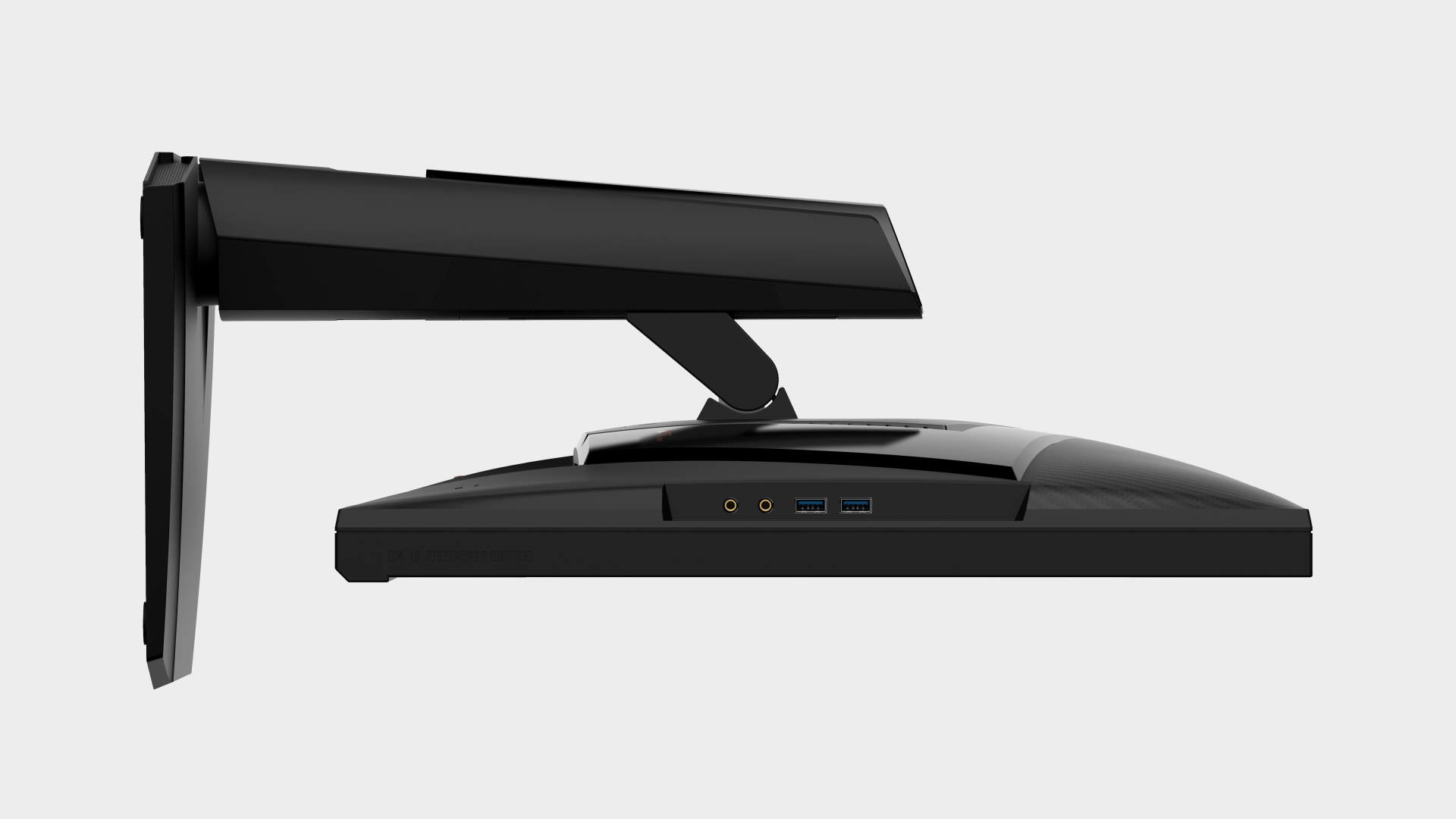
Another rad feature of the Optix MPG321UR for any power users out there is the inclusion of four KVM USB 3.0 ports that allow you to plug in multiple computers or consoles and control them with a single controller or peripheral. This KVM compatibility will save heaps of time if you want a single button to switch between PCs, consoles and all the peripherals they're connected to seamlessly.
It's refreshing to see that MSI is capable of delivering a premium gaming device that looks slightly more subdued than the usual full-throttle red gaming unit. There is a strip of RGB lighting along the back of the monitor ensuring that you can still show people you’re a gamer if you need to, but overall MSI has almost overcorrected to the point that you’d lose this one in a business monitor roundup.
Considering the market it's aimed at, I wouldn't necessarily consider it a downfall that the Optix MPG321UR doesn’t include speakers, but I do wonder why a pair of functional 2W drivers wouldn’t just be tacked on for those times when nothing else is working.
The only other limitation is that the giant square base isn't particularly stylish or even overly stable on the front edge. It’s not going to fall over on its own or anything, but just don’t put it anywhere it could be bumped easily from behind.
It’s definitely got a high price tag, but the MSI Optics MPG321UR makes the most of its larger and more accurate color gamut. HDR is still a bit of a horrorshow on PC, but at least the 600cd/m2 peak luminance figures give HDR games a fighting chance of looking more vibrant than their SDR counterparts.
It's a little hard to make a broad statement on value since it varies so much between regions. We didn’t have UK pricing at the time of writing but, in the US the MSI Optix MPG321UR lands at $999 putting it only a couple of hundred dollars more (20%) than Asus’ TUF Gaming Monitor VG28UQL1A. In Australia however, the suggested retail price is AU$1599 which is AU$634 (40%) more than its TUF competition. So basically, it's okay value in the states, but it might be worth reconsidering for anyone Down Under.
MSI's Optix MPG321UR is one of the first displays to support 4K / 144Hz, and it offers this alongside an impressive HDR color gamut. Sadly, it lacks full Nvidia G-Sync and any overdrive functionality, but it does offer AMD FreeSync Premium Pro HDR gaming.
